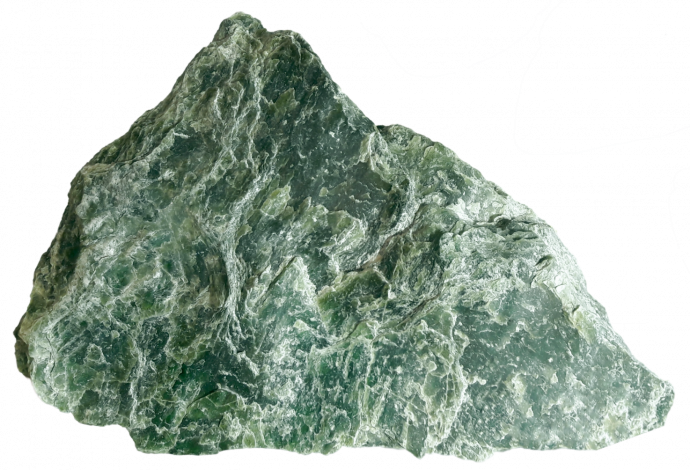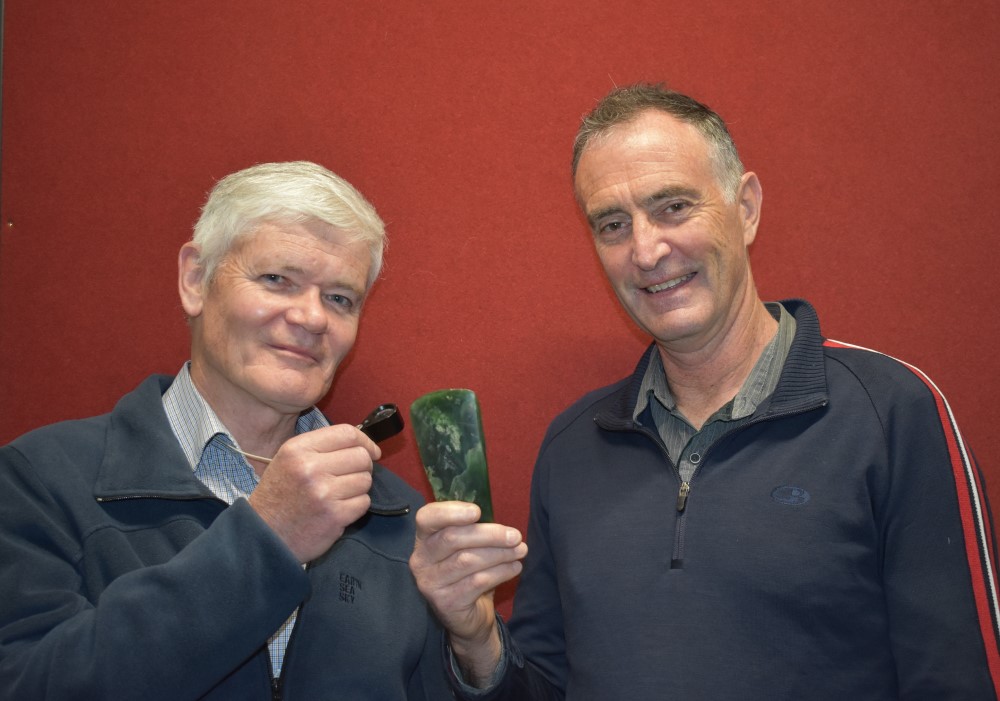Why is pounamu so tough?

Dr Nick Mortimer and Dr Simon Cox from Te Pū Ao GNS Science and pounamu artisans will use materials science and mātauranga Māori to explain the special physical properties and uses of pounamu – Aotearoa New Zealand's nephrite jade.
Published on 3 Whiringa-ā-rangi November 2022
Worldwide, nephrite jade is renowned for its extreme toughness compared to other rocks and materials. This makes it very suitable for artisanal work such as carving, shaping, and holding a sharp edge; these special properties, along with symbolic and spiritual associations, have made it highly sought after.
In Aotearoa, pounamu is a tāonga and the subject of much mātauranga. Varieties of pounamu, found only in certain places on the South Island, are distinguished by Māori according to colour, translucency and inclusions (other minerals trapped inside). These include kahurangi (translucent apple green), kawakawa (dark green to black with dark inclusions), īnanga (pearly white), and tangiwai (olive to yellowish brown, or blueish green). Mineralogically, most pounamu is nephrite but some is serpentinite.

Dr Nick Mortimer (left) and Dr Simon Cox (right), GNS Science. Photo: Peter Johnson.
Despite its mana and prestige, the mineralogical explanation of pounamu’s physical toughness remains elusive. All minerals have a natural hardness that is measured on the Mohs scale, which rates from 1-10, where a rating of 1 would be a soft mineral like talc, and a 10 would be diamond hard. Nephrite jade is only meant to be moderately hard (6 – 7), which is not consistent with how tough and resistant to fracture it is known to be. Theories for this discrepancy abound – from twisted and interwoven mineral fibres, to ultra-fine grain size, to stored strain.
This collaborative Marsden Fund Standard grant project will weave Western science with mātauranga Māori to address these theories, using state-of-the-art materials science and iwi cultural knowledge to form a larger picture of pounamu use over time. Knowledge transfer will be two-way: bringing together scientists who are unfamiliar with the carving properties or history of various samples and pounamu artisans who have yet to include physical science data in their work.
Outcomes from this project will further our understanding of the metal-like toughness of pounamu, inform the selection and cutting process of high-quality pounamu for carving, and illuminate future development of super-tough synthetic materials. With its cultural, geological, archaeological and materials science significance, this project can rewrite the jade textbooks of the world and lead to better management of this precious resource.
